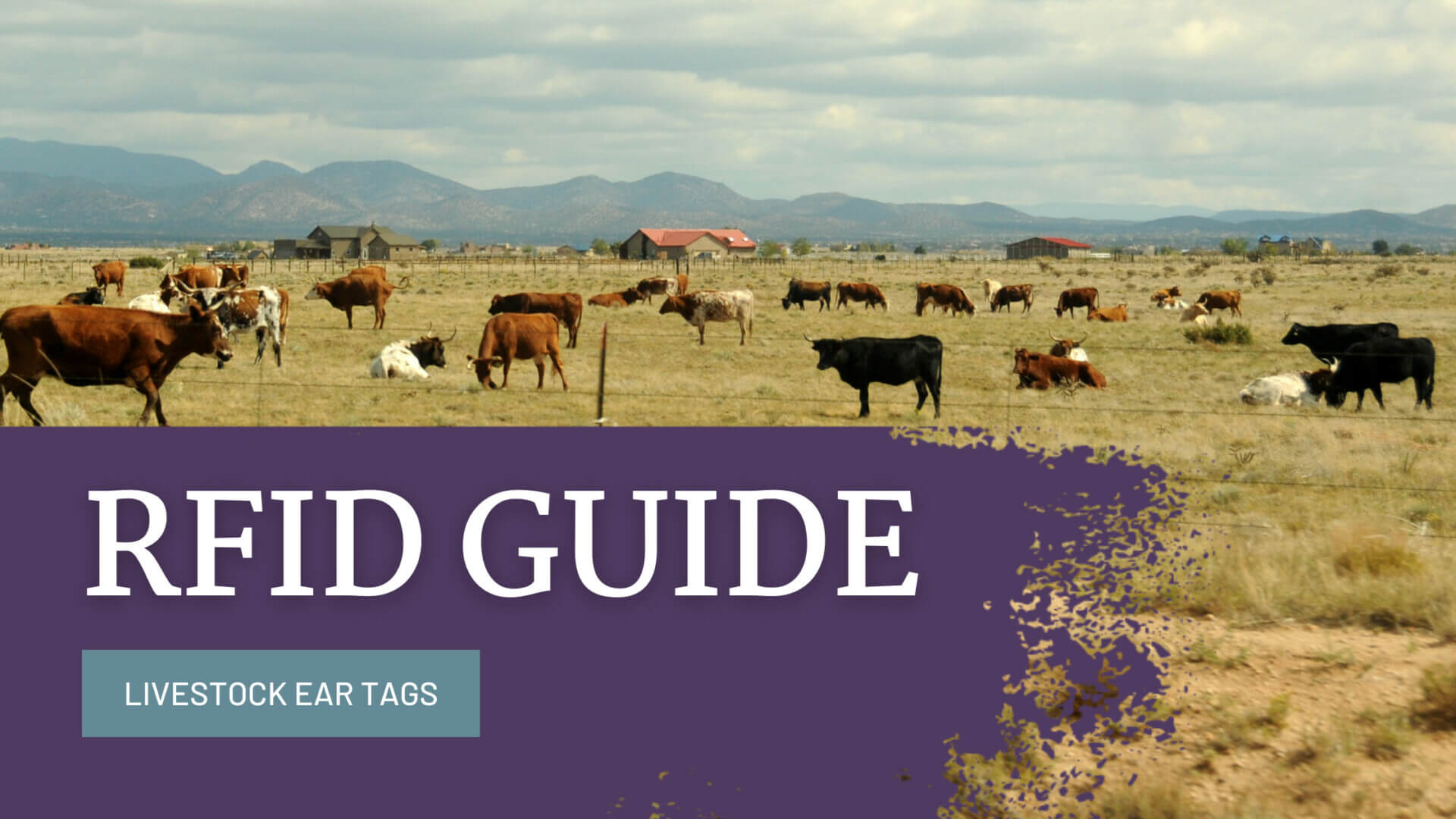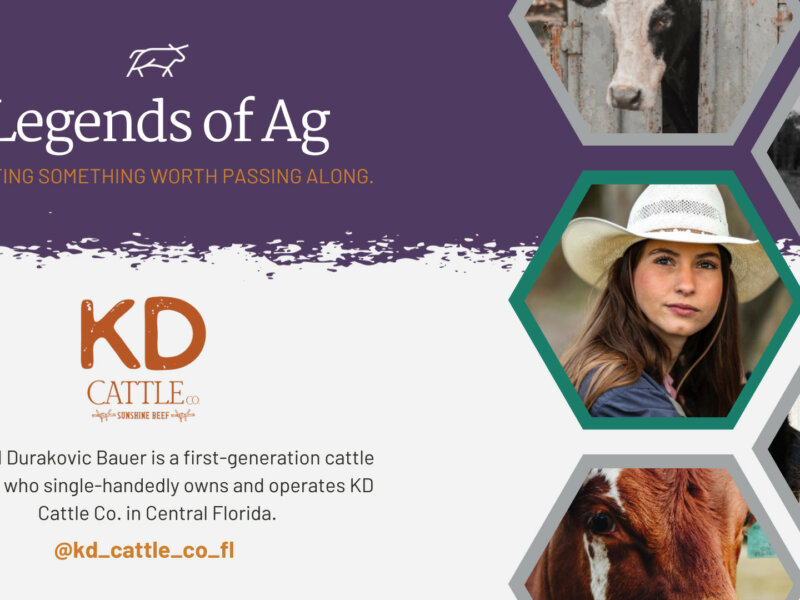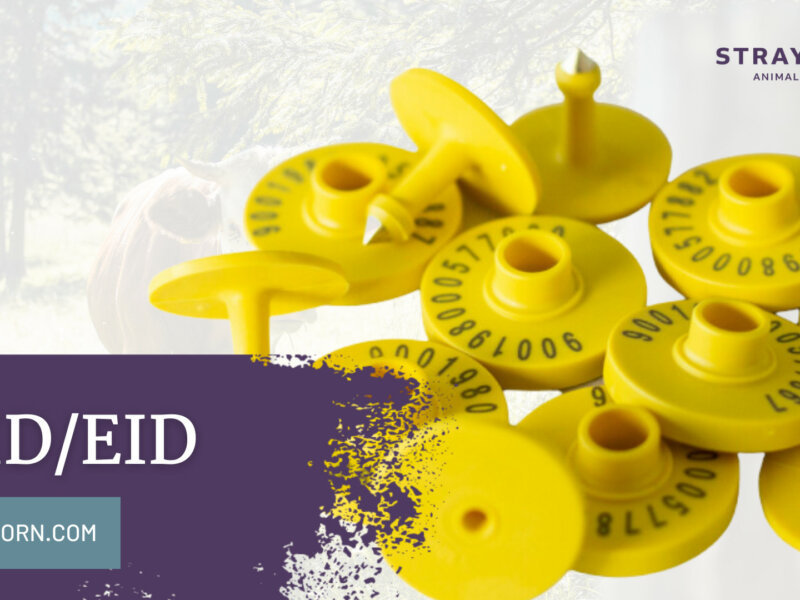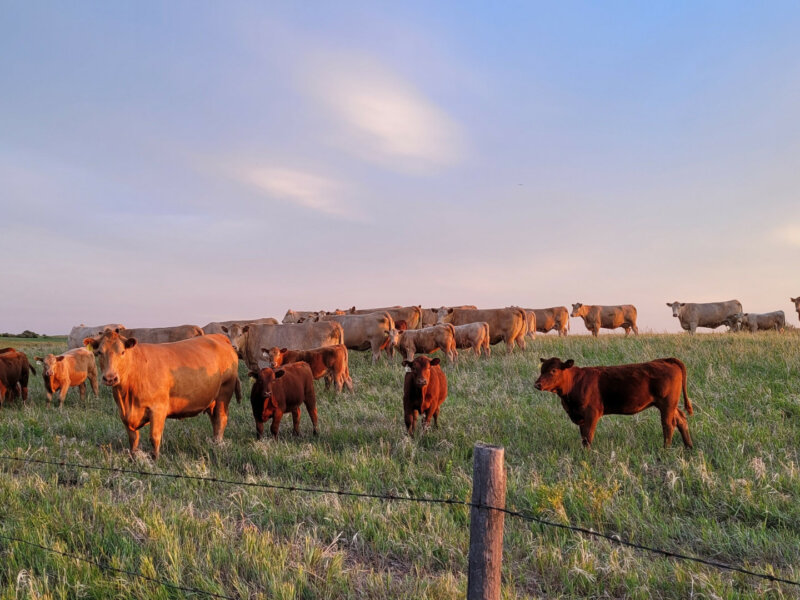
The Ultimate RFID Tag Guide
RFID tags have revolutionized the way information is stored and retrieved in the livestock industry. In this comprehensive guide to RFID tags, we will explore everything you need to know about these electronic tags and their various types.
RFID tags offer numerous advantages over traditional ear tags, such as providing more information and ensuring easy readability. Ranchers can track the heritage of registered animals, make informed decisions about their herds, and improve overall efficiency. This guide will cover different types of RFID tags, including low-frequency (LF) tags, ultra-high frequency (UHF) tags, and advanced active tags like GPS tags. We will also discuss the installation process, the longevity of RFID ear tags, compatible software and readers, and how to get started with RFID ear tags for your herd.
What are RFID tags?
RFID tags are cattle ear tags that are designed to provide more information electronically than traditional ear tags. Traditional style ear tags can be difficult to read when a lot of information is written on them and may fall out over time. RFID tags can include all the necessary information about the animal while supplementing a traditional dangle tag which can have a large, readable number on it for identifying the animal in the field.
RFID tags are also great for tracking the heritage or pedigree of registered animals or tracking large herds to determine which bulls to use for which cows. This is a low-cost way of easily improving your herd – having more information available makes you, as a rancher, able to make informed decisions about your animals.
These ear tags consist of a coil of wire and a small transponder, which make up a small inactive tag that can be read or activated using an RFID reader. Each tag is encoded with a unique animal identification number which can be transposed into whichever software you choose to use.
Types of Electronic Tags
There are several types of RFID tags – UHF or Ultra High Frequency, LF or Low Frequency, and then more advanced styles of active tags such as GPS tags.
Low-Frequency Ear Tags
The RFID tags that you’re going to be most familiar with are low-frequency or LF tags. These tags come in two styles, HDX and FDX-B. The two styles are very similar, with just a few differences. They are used the same way, just in different applications.
HDX tags can send or receive information, but not both at the same time. They are good for reading a lot of animals at once, such as in feedlots or auction markets. HDX tags have a slightly longer reading distance and thus are a little bit more expensive.
FDX-B tags have a shorter reading distance, but they also have a cheaper cost. FDX tags can send and receive information simultaneously. FDX-B tags are great for people who are just starting with RFID as they are excellent for individual animal tracking and for smaller operations.
UHF Ear Tags
UHF tags are designed to be read from a further distance, can be read faster, and are more accurate than low-frequency tags. These come in all different shapes and sizes. This is a newer technology, so these are less popular, but programs such as Performance Beef rely on these to work with their software in the best possible way. These tags have readers specifically designed for them. UHF readers cannot be used with low-frequency tags, and low-frequency tags cannot be used with UHF readers.
Active Cattle Tags: GPS and Sensor Style Ear Tags
Active cattle tags, including GPS tags, utilize technology to provide real-time tracking and monitoring of cattle. These tags are typically powered by batteries and have built-in features for data transmission and location tracking. These can include tracking the breeding cycle of animals, monitoring temperature and location, and notifying them via an app when an animal is sick. These normally have specific software that they are designed for and are typically much more expensive than your traditional RFID tags. There are a lot of systems and new technology in this field, and this is worth exploring if you have a smaller or custom operation in which you’d like to always have as much data as possible about your animals. These are often not cost-effective for large herds, as they can range around $10 or more per head.
Installing RFID Ear Tags
Traditional RFID tags, such as the ones that we sell here at Strayhorn, are installed the same way that a standard 2-piece ear tag is installed. Our tags use our two-piece applicator. There is an adjustment to be made to the tagger to fit the tags better – simply remove the black piece on the bottom jaw of the applicator.
Our low-frequency RFID tags come with the traditional male button and a female round tag, which contains the RFID transponder. The code engraved on the outside of the tag is the same number that is programmed into the tag. This will be the number that is used to identify the animal once it is uploaded into your system or software.
How long will RFID Ear Tags last?
These tags are designed to last for the lifetime of the animal and should last as long as a standard dangle tag. This can depend on correct application, as well as environmental factors such as the equipment around your animals and the climate of your area. (Read More Here! Why aren’t my tags staying in?)
What software and readers do ARDES RFID tags work with?
Standard RFID tags must be ISO approved. This is an international standard to ensure that all RFID products are usable and interchangeable with each other. Any ISO-approved RFID reader will work with these tags. Our RFID tags should be able to be used with any software or reader that is designed and certified with ISO to work with low-frequency ear tags.
Who can read the information on my ear tags?
These tags do not connect to the Internet, or any other platforms other than the software that you choose. Low frequency RFID tags cannot be read from over a few feet away, which means that no one can access your information. Your information is saved through the software, and not the tag, which also means that your information is confidential to you.
How can I start using RFID ear tags with my herd?
Supplies or Equipment Needed:
RFID Reader + Software
The first things you will need are RFID reading software and an RFID reader that’s compatible with that software. If you do not have software, many RFID readers come with basic software, or they will read directly into a spreadsheet file. RFID readers, and software companies, may suggest readers or software that are specifically designed for each other, but it shouldn’t matter what combination you choose. If you have any questions, reach out to the software company before purchasing your RFID reader to ensure that you won’t have any problems getting set up.
RFID Tags
After you have decided on your RFID reader and software, you need to get some RFID tags. Low-frequency RFID tags are compatible with any low-frequency reader. Each animal that you would like to track will need its own ear tag. Some RFID tags can be reused and taken out of an animal at the end of its life. Make sure that ear tag numbers can be recycled in your software prior to re-scanning the same tag in a different animal.
If you’d prefer to use UHF, GPS, or any other type of active tag, see the specific manufacturer for setup details.
Applicator
The last piece of equipment to set up is your tagger. Some taggers, such as the red one that we offer, have a small piece that you can take out to allow the RFID button to fit better. All taggers may not have this functionality, which will make it difficult to line the button up with the tag. Other brands of tags may require a different applicator to work with their ear tags. Ensure you are applying these correctly for the maximum possible tag life.
Types of RFID Readers
Most tag readers connect to your computer software via Bluetooth. Readers will come with a charging cable or require batteries. A USB cable may be included to connect your reader to your computer if necessary. This will depend on the reader that you choose.
There are two styles of RFID readers. The traditional style is a handheld reader, which may also be called a wand or stick reader. These are waved near the animal’s ear to read the ear tag. These emit a beep or vibration once the tag has been read to confirm that the tag has been successfully read.
The other style of RFID reader is a fixed reader. These are attached to a gate, chute, or alleyway to read the animals as they stand near the reader. With low-frequency tags, fixed readers must be very close to where the animal puts its ear to read the tag, so it is good to test that your location and the quality of the reader will reliably read the tags when on an animal.
The style, strength, and distance of your RFID reader may influence the reading distance of the ear tag.
Readers for UHF Ear Tags
Fixed readers are also very popular with UHF tags. UHF tags are readable from a longer distance, so therefore more numbers can be read from a longer distance at the same time. An example would be being able to read the numbers while they’re in a small pen or running down an alleyway instead of needing the individual animal to be restrained for scanning. UHF tags and UHF readers can read your tags from over 30 feet away in some cases. Handheld readers can also be used with UHF readers and UHF tags, but they require a special UHF tag reader. Low-frequency HDX or FDX-B ear tags will not work with a UHF reader, and vice versa.
Final Thoughts:
RFID tags have become an invaluable tool for ranchers, providing them with an efficient and accurate means of tracking and managing their livestock. By utilizing RFID technology, ranchers can easily access essential information about their animals and make informed decisions that can lead to improved herd management. Whether it’s low-frequency tags for individual animal tracking or UHF tags for reading multiple animals from a distance, RFID tags offer flexibility and convenience. Additionally, active cattle tags equipped with GPS and sensors provide real-time tracking and monitoring capabilities. While RFID technology has its costs, it can be a worthwhile investment for smaller or custom operations that require comprehensive data collection. Ultimately, implementing RFID ear tags can streamline operations, enhance productivity, and contribute to the overall success of a ranching business.
Have more questions about RFID tags?








